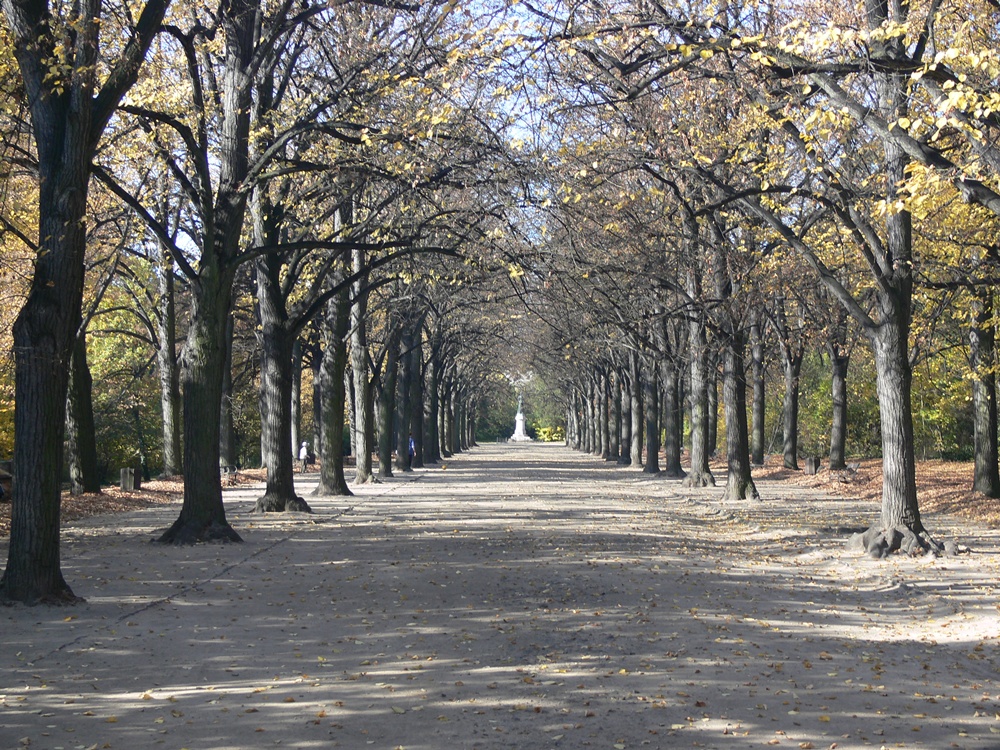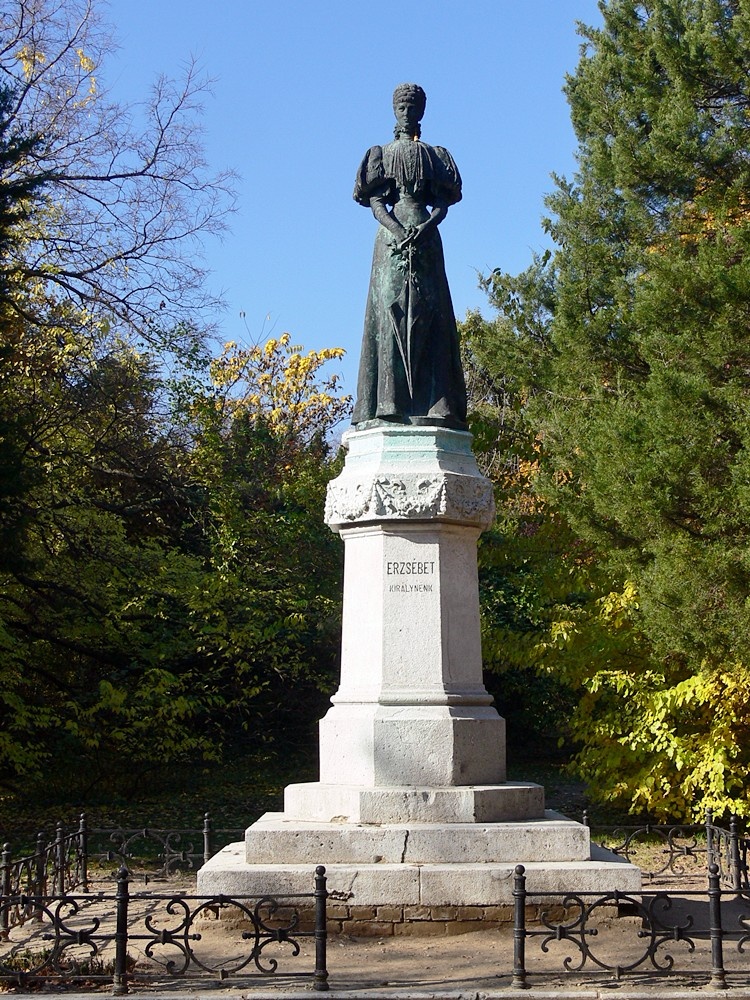Queen Elizabeth park
Táncsics Mihály road
The meadows created in November 1898 following the unexpected tragic death of Queen Elizabeth in September the same year is populated with around 100 species of evergreens. It was one of the first memorial parks created in respect for the beautiful queen and 48,000 of the 3 million trees planted all over the empire in memory of the queen were planted here in this park. The lime promenade leads up to the queen's statue that was inaugurated in the presence of Franz Joseph, her husband, in 1901. An interesting fact is that Queen Elizabeth considered Gödöllő more her home than Hofburg.
 |
| Queen Elizabeth park |
Elizabeth statue
The bronze statue shows Elisabeth with flowers and a parasol in her hands - a picture that the citizens of Gödöllő could see so many times - as history has it that Sisi loved walking and took long strolls in the parks and woods of her empire. The first full body statue of Queen Elizabeth was made by József Róna, a major sculptor of the time. The pedestal is decorated by garlands. The statue itself is much larger in its size than Elizabeth used to be: the imposing 2.5m statue shows Elizabeth in a straight pose. The elaborate finishes on the statue reflect Elizabeth's delicate features and beauty. The statue is a good image of Elizabeth's complex character and conveys the warm feelings that she cherished with the Hungarians.
 |
| Elizabeth statue |
Rack of stones (Sziklahalom)
At the back of the queen's statue a rack of stones is piled up the stone pieces of which represent the 64 former counties of Hungary. The sculptor, György Zala, who is also credited with the creation of Heros' Square in Budapest, put a limestone crown on top of the rack as a symbol of the one-time empire. Town development plans include plans on the reconstruction of the statue as well as its surroundings and the entrance of the park.
Calvary
A distinguished work of art is the Calvary, a baroque memorial built by András Mayerhoffer in 1771-1775 on orders by Antal Grassalkovich I (1694-1771). Golgotha, the crucifiction scene of Jesus Christ is shown by a hollow stone building. The inside of the Calvary houses a red marble water reservoir which is filled with water from Pazsaki stream and which provides for the watering of the park. Because the stream silted up water from Hattyús (swan) lake was pumped up with steam engines to water the park. The Golgotha is equipped with stone banisters the rococo decoration of which is a delicate decoration for the three statues of the saints that the banisters embrace: the Virgin Mary, Saint John and Mary Magdalene. The memorial, a characteristic baroque urban work of art, was built from soft marble and due to its vulnerability it had to be reconstructed several times: in 1827, 1931, 1961 and 1990. A new renovation plan is underway: the whole memorial together with the pedestal and the park will be renewed.
| 







